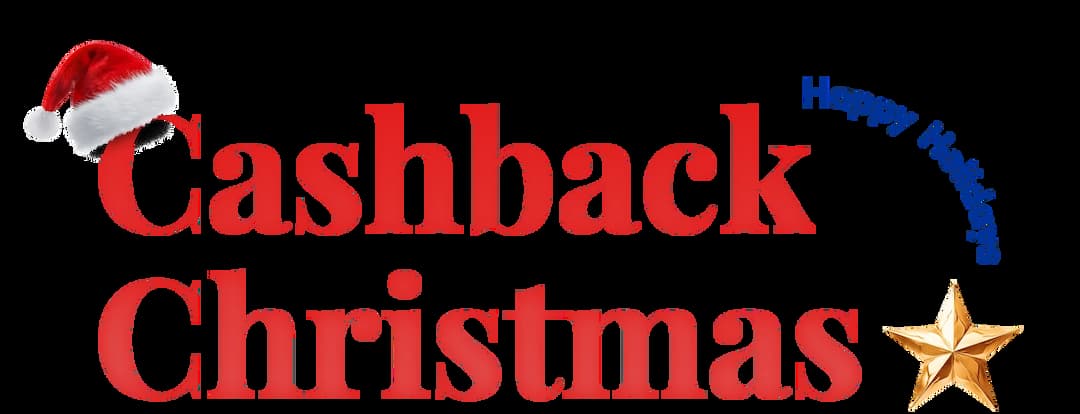A Guide to A2P 10DLC Compliance for Businesses

If you are planning to use text messages to contact consumers, or you are already using A2P (Application-to-Person) messaging, you will need to register for A2P 10DLC. The rule came into effect in 2021, but it was only made mandatory in 2023. Without registering, your message will not be delivered to consumers, so non-compliance is not an option.
What is A2P?
A2P is Application-to-Person messaging in which messages are sent from an application to a mobile device. A2P is also called Non-consumer messaging.
Two-way people-to-people wireless text traffic using 10-digit phone numbers became possible in the late 1990s after Nokia mass-produced a mobile phone with a keyboard. It was the first phone to support SMS text messages.
A2P messages are typically sent from large-to-small businesses, entities, political campaigns, and organizations to communicate with consumers. It includes notifications, alerts, and messages sent to multiple individuals from businesses. All automated traffic that consumers do not use to assist in their workflow falls under A2P message traffic. Real-time notifications, service alerts, and online booking confirmations are examples of A2P.
What is 10DLC?
10DLC is a recognizable, local 10-digit long code phone number used by businesses for non-consumer messaging or A2P messaging. The messages can be transactional, promotional, or informational.
The 10DLC number must be registered to be compliant with messaging guidelines in the US. Like toll-free phone numbers, 10DLCs allows voice calls and two-way messages. Businesses can use the same local number for both SMS messages and phone calls.
10DLC vs Toll Free
10DLC numbers have a local prefix, are less expensive, have higher throughput, and take longer to obtain approval, while toll-free numbers have a fixed or standard prefix (800, 833, 844, 855, 866, 877, and 888). 10DLC is a better option for businesses as consumers are more likely to trust a brand with a local number, increasing the open rates.
10DLC vs Short Code
Short codes are the most expensive SMS marketing option (one-time provisioning fee + up to $1500/month), but they also have the best throughput. They are 5-6 digits long. 10DLCs, on the other hand, is a ten-digit number that is relatively cheaper with a comparatively lower throughput.
What is A2P 10DLC?
A2P 10DLC is a standard developed in 2021 by major mobile carriers (T-Mobile, AT&T, and Verizon) for application-to-person text messages using a local phone number or a 10-digit long-code phone number.
It is for business texting rather than person-to-person communication. A2P 10DLC was launched to protect consumers from unwanted messages, police spam messages, and provide businesses with a reliable and secure way to reach consumers. Unlike in shared short codes, the actions of one brand do not affect another as each company owns a designated line. Carriers will be able to determine which company violated its terms with what message.
Alternatives to A2P 10DLC are P2P, toll-free, short code, and OTT.
- P2P — Person-to-person messaging is the exchange of messages between two mobile phones via a mobile network.
- Toll-free — Text messaging from toll-free numbers (800, 833, 844, 855, 866, 877, and 888) to mobile phones.
- Short Code — 5 or 6-digit number used to send messages to customers at high volumes (e.g., bank account alerts)
- OTT — Over-the-top messaging is a type of communication that relies on the internet to send and receive texts (Facebook Messenger, WhatsApp, Viber, etc.).
Who Needs to Register for A2P 10DLC?
Companies that send SMS/MMS to customers in the United States over a 10-digit phone number (239-305-4117) from a software application must register for A2P 10DLC. However, you do not need to register if your target customers do not reside in the United States.
Receiving mobile carriers have built a separate channel for business texting. Only businesses whose texting plan has been approved will have access to the channel to communicate with consumers with a local number. A single number is associated with a single campaign for texting. Each US mobile carrier has its own fees and regulations.
10DLC Compliance
Businesses that have not registered for A2P 10DLC are not in compliance with 10DLC. The registration deadline was on July 5, 2023, after which messages from unregistered phone numbers started to be blocked gradually.
Twilio blocked all SMS and MMS messages to US phone numbers from unregistered 10DLC phone numbers from September 1, 2023, onward.
Initially, unregistered numbers had to pay higher message fees on top of standard text messaging fees. The cost depended on the receiving carrier. The carrier also subjected messages from unregistered and unverified businesses to greater filtering. This led to no deliverability or the text marked as “spam likely” in the customer’s inbox.
If a message from a ten-digit long code does not have an A2P 10DLC tag, then the message is expected to fail. If the text does not go through, you will not be notified with a warning or error message. Furthermore, they will not troubleshoot your issues.
In the coming future, carriers will fine non-compliant businesses hefty fees on top of not delivering their messages.
To become 10DLC compliant, you need to register your company and your campaigns with The Campaign Registry (TCR). Those who embrace 10DLC compliance can improve customer communication and their business messaging strategy.
A2P 10DLC Registration Process
A2P 10DLC registration requires organization information and message usage details, including customer, brand, and use case types. It lets carriers know who you are and what you are sending.
The registration process requires you to register your brand, apply for vetting (optional), register your campaign, and associate a 10DLC number for the approved campaign. In the case of multiple brands, each company must register individual messaging campaigns with TCR.
You can only enjoy the benefits of 10DLC while sending and receiving text messages after both the brand and campaign have been approved.
The expected brand registration and vetting time is 1 business day to 3 weeks. Campaign registration may take up to 4 weeks; requesting a phone number will require 10 days or more.
1. Brand Registration
The first step in A2P 10DLC registration is brand registration. This identifies who you are as a company so that mobile carriers know you are legitimate.
To register your brand or company, you will need the following information:
- Legal name of the company
- Trade name if different from legal name
- The country where the company is registered
- Type of organization
- Registration number (EIN)
- Company Address
- Company website
2. Campaign Registration
After the TCR has verified your company information, you will need to create a 10DLC campaign that specifies how consumers can opt in, opt out, and receive help.
Campaign registration is required to tell carrier networks the type of messages a brand will be sending using the A2P 10DLC. There are two types of campaigns: standard and special.
Standard types of campaigns comprise account notification, 2-factor authentication (2FA), customer care, and delivery notifications. They are approved immediately without further review.
Special types of campaigns, including political campaigns, charity, and emergency messages, are sensitive, and the carrier networks further review them before approving them.
Standard Campaign Type Use Case | Special Campaign Type Use Case |
2-Factor Authentication (2FA) | Agents and Franchises |
Account Notification | Carrier Exemptions |
Customer Care | Charity |
Delivery Notifications | Conversational Messaging |
Security Alert and Fraud Alert Messaging | Emergency |
Higher Education | Sweepstakes |
Public Service Announcement | Political (Electoral Campaigns) |
Machine to Machine (M2M) | Social |
Marketing | Sole Proprietor |
Polling and Voting | Large CSP Trial |
To register for the campaign, you will need to provide the following information:
- Use Case
- Use Case Vertical
- Campaign Description
- Sample Message(s) or message template
- Opt-in/opt-out messages
- Additional Campaign Details
3. Request 10DLC Number
Once your 10DLC campaign is approved, you must associate a long code with it by requesting a phone number. You need to pay a monthly fee to lease the 10DLC number, which can only be linked to a single 10DLC campaign. However, if you already have a long code number, you don’t need to buy a new one.
What are the benefits of A2P 10DLC?
The benefits of A2P 10DLC include versatility, flexibility, more security, high throughput, and better deliverability than P2P messaging. Since businesses used to send messages to consumers from unregistered long codes, mobile carriers enforced strict filtering mechanisms to stop spam-like texts and lowered throughput to 1 message per second. But as 10DLC is designed to handle the business needs of bulk texting, you have lower filtering risk and better deliverability for a meager cost.

1. More Secure
Once you become A2P authorized, each of your registered campaigns will be given a trust score determined by the purpose and content of the message. The trust score affects the deliverability speed and volume. It indicates how likely the campaign is to be a source of spam and fraud messages. This is done to protect consumers and assure them that the communication is legitimate.
If you obtained a low score, it is either you are a small business, or there is inconsistency in the information you submitted during A2P registration.
2. Higher Throughput
P2P long codes or person-to-person messaging has a throughput of 1 message per second. It becomes a hassle when you want to send a message to thousands of people. With A2P, throughput is very high (up to 225 messages per second).
Brand type, campaign type, and trust score of a standard brand assigned by TCR determine the A2P 10DLC throughput.
3. Improved Deliverability
To protect consumers from spam and scams, mobile carriers have implemented different filtering mechanisms. However, sometimes, genuine traffic gets blocked. This can affect a company’s deliverability rates.
A company can improve the chance of business text passing through spam filters by registering their brand and campaigns with The Campaign Registry. This is because there is a separate channel for A2P traffic.
4. Better Brand Recognition
Having a dedicated 10-digit phone number when interacting with customers creates a consistent identity, allowing consumers to identify the number with your brand.
Conclusion
A2P 10DLC allows businesses to reach out to customers through text messages. It helps them achieve high deliverability rates, better brand recognition, and higher throughput. However, you must ensure your messages are delivered properly and follow the rules.
You can switch to a cloud phone system and take better advantage of 10DLC. Calilio facilitates your SMS marketing strategy, allowing you to send text messages in large numbers. With our bulk SMS feature, you can ensure each message is impactful, compliant with A2P 10DLC regulations, and reaches your audience.

Get Cashbacks Up to 43% Straight To Your Wallet!
Unlimited Virtual Numbers – Local, Mobile & Toll-Free from 100+ Countries
Free Local Phone Number from US or Canada
Crystal-Clear Calls Starting at Just $0.0153/min
24/7 Human Support – Because Great Service Never Takes a Holiday


Frequently Asked Questions
What are the rules for A2P 10DLC?
The rules for A2P 10DLC are:
- Register your brand with the carrier networks to identify who you are.
- Register message samples to indicate the types of messages you will be sending to consumers.
- Support consumer opt-in and opt-out mechanisms.
- Comply with General Data Protection Regulation (GDPR) and the Telephone Consumer Protection Act (TCPA).
Is A2P 10DLC mandatory?
What is the limit of 10DLC?
What is an example of a 10DLC?
What is A2P 10DLC registration deadline?
Why do I need 10DLC?
How long does A2P 10DLC registration take?

Still have questions?
Can’t find the answer you’re looking for? Please chat with our friendly team.
Stay in the loop
Get the latest call insights, trends, and updates delivered straight to your inbox.
By subscribing, you agree to receive updates from Calilio.
You can unsubscribe anytime.